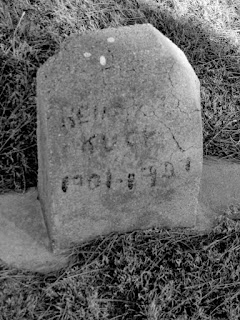Country
Cemeteries
One of the sidelights of chasing
down the back roads looking for old stuff is the little cemeteries. They come in sizes and shapes, many were part
of a church that is now gone, a few were boot hills. All are interesting little repositories’ on
history. Some are untended and are
overgrown, others have a caretaker and are well groomed.
The overgrown ones, I think twice
before I go walking among the weeds. If
I have a view of the ground I venture forth watching where I step. There are the slithery critters, among others
and there are the stickery ones, cacti. So
I carefully amble forth walking among the graves. Looking for the unusual, unique, veterans and
certain dates. Over the years I
collected a pretty nice collection of small grave yards.
Couple of the dates I focus on are
1918 and 1922. These two dates were the
years of the nastiest flu pandemics to strike across the country. During 1918, was WWI and from what I’ve read,
more soldiers died from the flu then combat that year. Something like 50 million people perished
that year worldwide. The pandemic began
in 1917 and hit its zenith 1918. Then in
1921 the flu raised its ugliness’s again peaking out in 1922 and subsiding in
1923.
As I walk visiting the graves, I
watch the dates and 1918 starts to jump out for the number of deaths for that
year. Then I see a bunch dated
1922. For people back then it would not
be pleasant. Medicine back then was
still pretty primitive to care for people.
I quietly pause at these markers and move on. Not all were from the flu, I’m sure there
were some that were natural causes or accidents…. Hummmm maybe a gunfight….
Some of the headstones were large elaborate
stones, occasionally a family stone.
Many were just a plaque or no gravestone of any type. If they were travelers and got sick in another
town, they usually went out in the pasture to be buried. A wooden cross may mark it for a time otherwise
the land reclaimed.
There was one cemetery I walked that
had only one marker with 1918 on the headstone.
There was a section of unmarked graves.
Yet with only one 1918 stone it was very unusual. Many of the pioneer families would bury their
loved ones out on hillside out behind the house. Seldom were these recorded and most today are
unknown to the public unless one overhears a conversation about such.
The other dread disease way back
when was smallpox and cholera. Many of
these victims were cremated for fear of spreading the disease. There was a local doctor who perished from
treating a patient with smallpox. He was
buried in a separate grave on a hillside overlooking the valley. Even boot hill was not a place for the valiant
doctor. Yet the doctor now has a trail
and park named for him and no longer is he alone on the hillside.










No comments:
Post a Comment